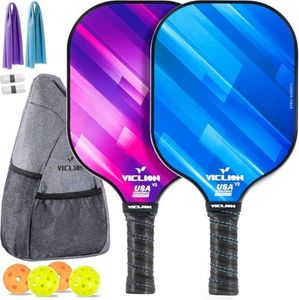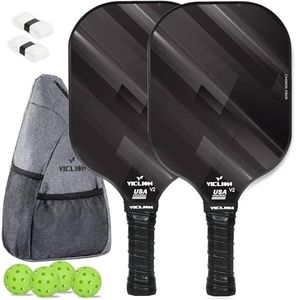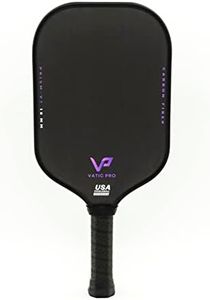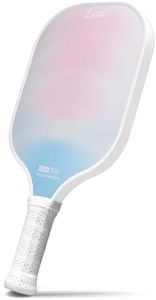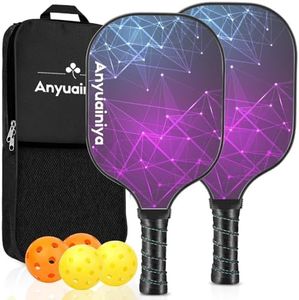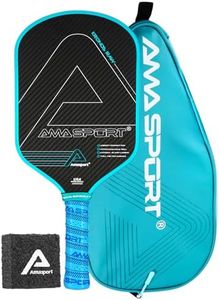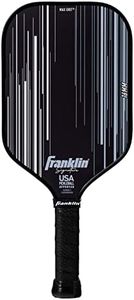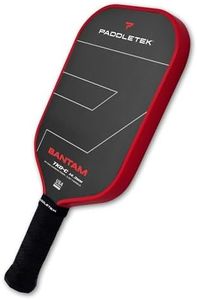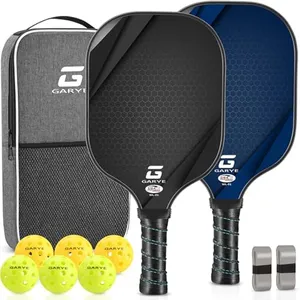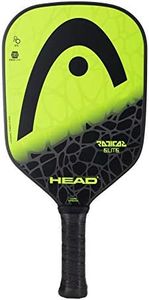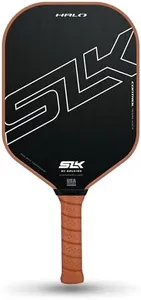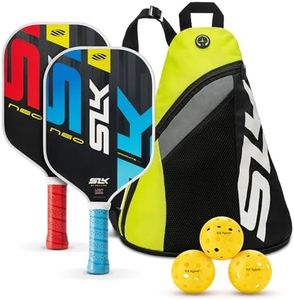We Use CookiesWe use cookies to enhance the security, performance,
functionality and for analytical and promotional activities. By continuing to browse this site you
are agreeing to our privacy policy
10 Best Pickleball Paddles For Beginners
From leading brands and best sellers available on the web.Buying Guide for the Best Pickleball Paddles For Beginners
Choosing your first pickleball paddle can seem overwhelming with so many options, but it’s an exciting step toward enjoying the game. As a beginner, your focus should be on comfort, ease of use, and getting familiar with the sport, rather than seeking advanced features used by competitive players. When picking a paddle, you'll want to consider how it feels in your hand, its weight, its grip, and how much control it gives you. Pay attention to these key aspects, and you'll set yourself up for a positive learning experience.WeightThe weight of a paddle directly affects how easy it is to swing and how much power or control you’ll have. Lighter paddles (typically around 6.5 to 7.2 ounces) are easier to handle and great for control, which is ideal for beginners who need to develop good form and technique. Heavier paddles (around 7.3 to 8.5 ounces) offer more power and can hit the ball harder, but they might cause arm fatigue more quickly. Most beginners are best served with a lightweight to midweight paddle, as it reduces the risk of strain and makes learning new skills easier.
Grip SizeGrip size refers to the diameter of the handle, and it’s important because it impacts both comfort and control. A grip that’s too small or too large can lead to discomfort, reduced control, or even injuries over time. Smaller grips (about 4 to 4.25 inches) are suited to players with smaller hands and allow for more wrist action and spin. Larger grips (about 4.5 inches and above) are less tiring for those with larger hands and offer more stability. Beginners should measure their hand size or try out different grip sizes to see which feels most comfortable and secure for them.
Paddle Face MaterialThe material covering the paddle face influences the paddle’s feel and performance. Common materials include composite, graphite, and wood. Wooden paddles are heavy and inexpensive, but not ideal for most beginners as they can be hard to control and tiring. Composite and graphite paddles are lighter and offer a good mix of control and power. Beginners should look for lightweight composite or graphite paddles, as these provide a better introduction to the game with easy handling and a softer touch.
Core MaterialThe core is the inner part of the paddle and determines its feel, sound, and response. Typical core materials are polymer, aluminum, and Nomex. Polymer is the most popular for beginners as it offers a balance of softness, quietness, and control, making it forgiving and easy to use. Nomex cores are firmer and louder, typically used for more power (favored by advanced players), while aluminum is light but may be less durable. For new players, a polymer core is usually the most user-friendly choice.
Paddle Shape and SizePaddles come in different shapes, from traditional wide bodies to elongated designs. Standard paddle shapes are wider and provide a bigger sweet spot, making it easier to hit the ball accurately, which is great for beginners. Elongated paddles offer more reach and power but are harder to control. It’s best for beginners to start with a standard or wide paddle for maximum forgiveness as they learn the basics. The maximum allowed dimensions are regulated, so most paddles will not differ greatly in length, but the surface area can vary.
